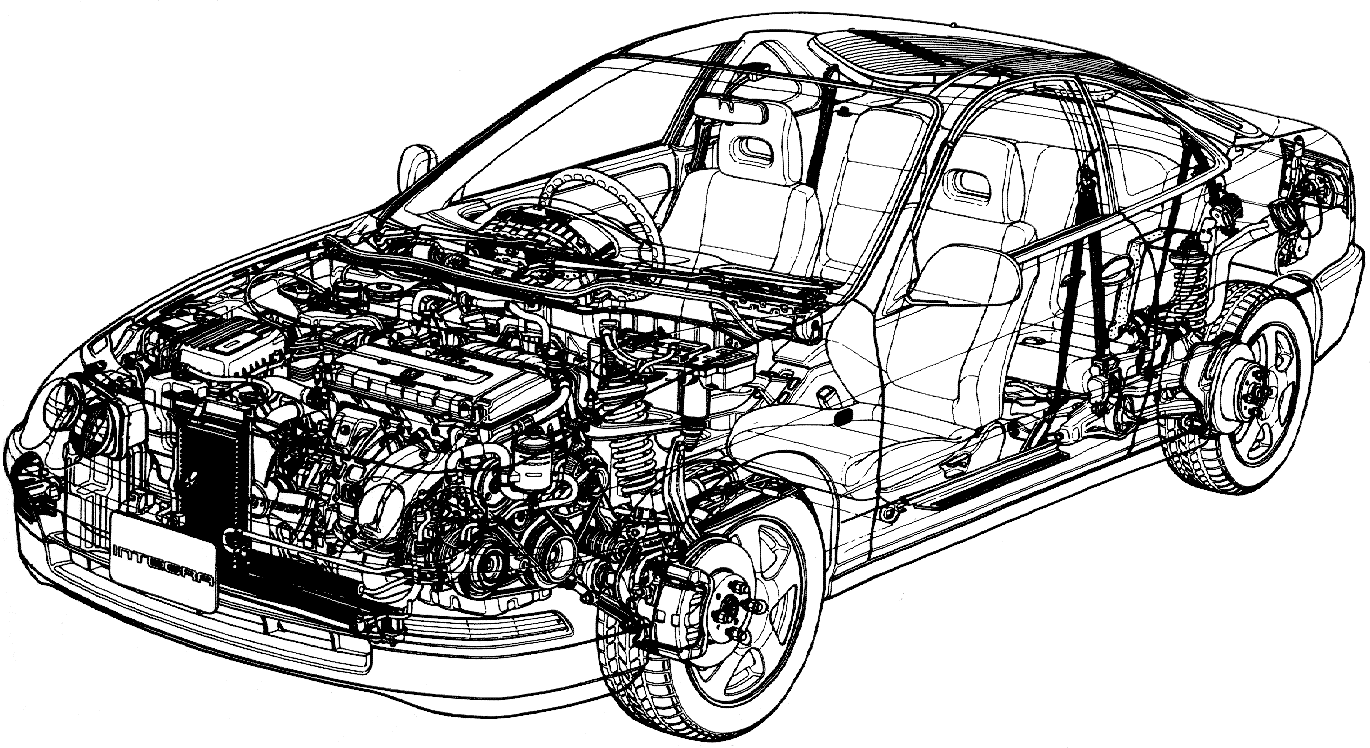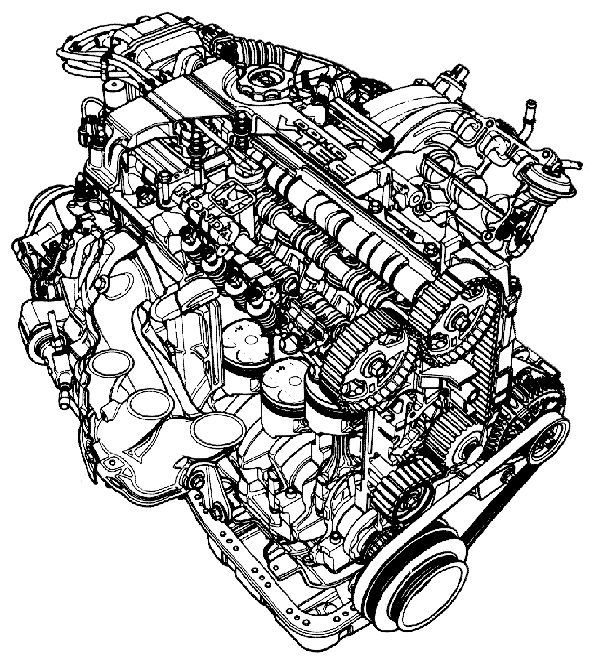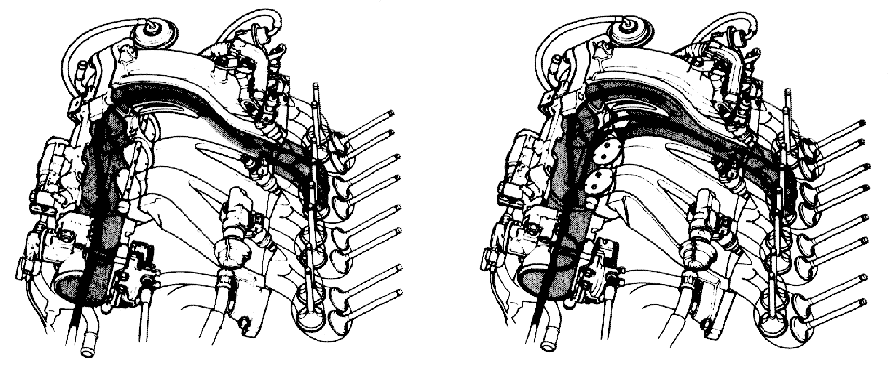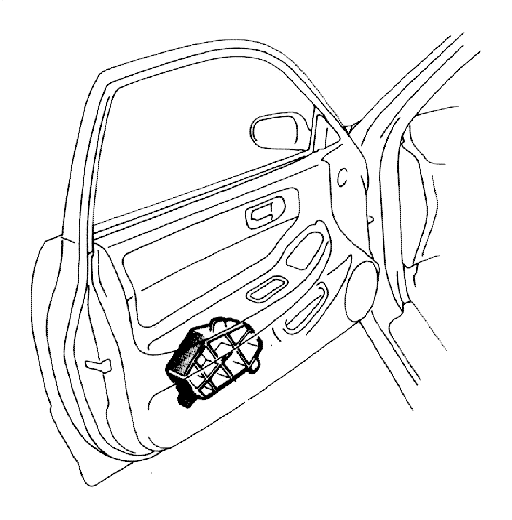
reprinted from Automotive Engineering, September 1993
Honda/Acura Integra shares platform with Civic
Honda has kept an accepted–but now not certain–model cycle of four years with the new Integra sporty compact, which is marketed in the U.S. as an Acura model. Concession to the time is that it is not a separate line of cars, but shares its basic platform with the Civic and the Japanese-market-only Domani. Initially it is available in a two-door coupe body, with a four-door version following in a few months' time.
The new Integra coupe measures 4.38 m long (10 mm shorter than the previous model), 1.695 m wide (5 mm short of the Japanese small car limit), 1.335 m tall, rides on a 2.57-m wheelbase (20 mm longer than its predecessor), and has front 1.475-m and rear 1.465-m tracks. Curb mass of the Japanese range varies between 1030 and 1120 kg, including air conditioning.
The new Integra's design theme is clearly sporty, with a huge single-piece, recyclable, polypropylene facia/bumper face with four deeply set, separate headlamps. Large INTEGRA letters are embossed on the facia and rear-bumper, partly for ready identification and partly to discourage attempts to reproduce poor and non-recyclable imitation replacement parts.

There are three engine choices in the Japanese Integra lineup. The base engine is a SOHC, 16-valve, 1590-cc, inline four-cylinder unit breathing through two side-draft CV carburetors, a rarity these days. Honda maintains the setup is still a good cost/performance tradeoff while meeting Japan's emission requirements. This engine is rated at 77 kW (JIS net) at 6300 rpm and produces a maximum torque of 135 N·m at 4500 rpm on a 9.1:1 CR. Honda's PGM-FI electronic fuel injection adds 11 kW and 7 N·m to the same engine with the same compression ratio.
 |
| The Integra's variable-valve-timing/-lift, variable- induction, type B18C engine produces 132 kW (JIS net), or 100 bhp/L. |
The top engine for the Integra is the new type B18C, DOHC, 16-valve, 1797-cc unit equipped with the VTEC variable valve-timing-and-lift mechanism combined with variable-length, dual-induction manifold, which together produce three torque curves. Specifically, the engine runs on the low-speed timing/lift cams and breathes through long intake tracts up to 4400 rpm. Between 4400 and 5800 rpm, the high speed timing/lift cams are used, still inhaling through the long tracts. Above 5800 rpm, the system switches to the short intake tracts, getting more air while on the high-speed timing/lift cams. The B18C engine produces 132 kW (JIS net) at 7600 rpm (125 kW at 7200 rpm, when combined with automatic transmission) for and a peak torque value of 174 N m at 6200 rpm on a high 10.6:1 CR.
A fourth engine option, to be added when the four-door version is introduced, is the familiar type B18B, DOHC, 16-valve, non-VTEC, 1834-cc L4 that powered the previous U.S.-model Integra. Engine choices for American Integra buyers will be the B18B and B18C. Although they carry the same numerical designation, "18," they are of different origins: the type-C is a development of the 1.6-L, VTEC unit. (More on the B18C can be seen in Tech Briefs.)
Two types of transmissions are offered with each engine type, a five-speed manual gearbox or an electronically controlled, four-speed automatic with seven selector positions (P-R-N-D4-D3-2-1). The manual gearbox has a rod-type shift linkage for shorter and more precise lever throws. The type Y20 gearbox for the VTEC engine employs a double-cone synchronizer on the second gear. Also available with the VTEC is the type MP74 Prosmatec (PROgressive, Shift schedule MAnagement TEChnology) II "smart" automatic that senses up- or down-hill and holds third gear with the transmission left in D4. When descending a steep downhill at under 30 km/h, the Prosmatec II automatically downshifts to second gear.

Five mounts now locate the power unit, instead of the previous Integra's four. The method is similar to the new Civic's in that the engine and transmission side mounts are positioned on the front longitudinal frame members. The rear mount ties the clutch/torque converter housing to the transverse frame. Additionally, two stopper mounts hold the lower front end of the power unit. The VTEC engine's side mount is a fluid-filled type in a cast-aluminum mounting bracket. The five-point mounting method allowed elimination of a heavy, front, transverse, subframe member, thereby contributing to an improved weight distribution (63% front/47% rear).
Torque is transmitted to the front wheels by equal-length driveshafts. The VTEC version's final drive may be equipped with a viscous-coupling-type, limited-slip differential.
The suspension, basically similar to that of the Civic, is by Honda's "double wishbone" independent system–or SLA (short and long arm) by GM's preferred nomenclature. Neither may be an accurate description of the Honda suspension, especially the rear one, which is comprised of hefty lower transverse and trailing arms and a thin upper I-arm. The trailing arm's front end is located by a short transverse compensating arm which cancels unwanted toe changes. New in the Integra system is a high-rigidity hub with precision-fitted, double-row ball bearings that preclude an initial toe-out when side-force is applied. The geometry, spring rates, and shock-absorber damping characteristics are all specific to the Integra application. The car's front and rear roll centers are lowered 46 mm and 17 mm, respectively, for improved adhesion and stability. Additionally, the VTEC model's front suspension mountings are reinforced with large-diameter tubular bars that tie the strut towers and the lower arm mount areas.
 |
| In addition to a steel impact bar, a polypropylene "crushable" structure in the Integra's door protects occupants in side impacts. |
Steering is by an engine-speed sensing, power-assisted, rack and pinion system. The 1600 gets a front ventilated-disc/rear drum brake combination, while the VTEC is fitted with an all-disc system. Four-sensor, three-channel ABS is available on ether version (drums are replaced by discs). The ABS computer is now a 16-bit type, affording finer control of the solenoids. ABS operates at as low as 8 km/h (previously 10+ km/h), and pedal kickback is greatly reduced. A traction-control system is also an option, combined with ABS, on the VTEC model.
The welded, all-steel body shares the Civic's underbody construction, however, it has a sturdier upper structure. The body is stiffer by 40% in bending and 20% in torsion than the previous Integra's. Each door has crushable, impact-energy-absorbing members in addition to the usual impact-beam bar. The driver- and front-passenger-side SRS air bags are optionally installed on the Japanese Integra.
Jack Yamaguchi